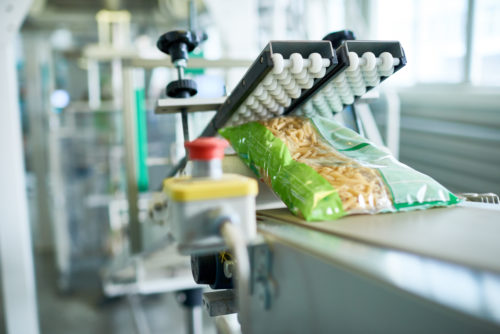A Guide to Packaging Organic Products
Leave a CommentWith heightened awareness of pesticides, food additives, and production techniques, consumers are increasingly seeking out organic foods. Such foods are regulated under the Organic Food Products Act of 1990, which sets forth strict, specific rules about how and under what conditions a product may be legally labeled “organic.” The care, effort, and cost undertaken to comply with these regulations should be applied not only to the food products themselves, but to the packaging as well to ensure top quality and consumer confidence.
What Is the Organic Product Certification?
For food production purposes, the term “organic” is defined by the US Department of Agriculture as “using cultural, biological, and mechanical practices that support the cycling of on-farm resources, promote ecological balance, and conserve biodiversity.” This legal framework sets standards for food production, including for organic foods. Satisfying these requirements allows food packaging to include the USDA Organic Seal. Included in these regulations are requirements that:
- Foods must be produced without the use of prohibited treatments or practices including the use of sewage sludge, ionizing radiation, most synthetic fertilizers and pesticides, and genetic engineering.
- Farmers must meet standards for animal care, soil quality, weed and pest control, and other practices.
- Foods may not contain artificial flavors, preservatives, or dyes.
- Producers, processors, and handlers must be certified by a USDA-accredited agent to label their products as organic.
Organic Food Product Packaging Requirements
Attractive, functional packaging that appeals to consumers and shares your brand identity is a critical element in a product’s success. When packaging organic foods, materials and processes must also meet specific USDA requirements to be eligible for organic labeling and to ensure an unbroken chain of proper organic food handling. These regulations include:
- The packaging facility must be USDA inspected and certified to handle and package organic foods, meeting all relevant requirements and regulations.
- Packaging materials and techniques must also conform to all organic food content and handling requirements at all steps in the process.
- Only preservatives and additives on the National List of Allowed and Prohibited Substances may be used for coloring, preserving, or flavoring of organic foods, and many of those only in specific ways.
- Packaging materials may not contain or have contact with any preservatives or fungicides, fumigants and other pest control compounds, which are not on the allowable substances list.
 Organic Product Labeling Requirements
Organic Product Labeling Requirements
Consumers expect clarity and honesty in product labeling, particularly when purchasing products labeled as being organic, meaning they are certified to avoid prohibited pesticides, fertilizers, chemicals, additives, preservatives, or to use any disallowed technique such as irradiation or genetic engineering. To help ensure consumer confidence, the USDA has very specific requirements for when and how products may be described as “organic,” defining several levels of labeling:
100% Organic
- To be labeled 100% organic, all ingredients must meet all standards for organic production and processing.
- Exceptions to the 100% organic requirement are water and salt when used as processing aids, though even salt must meet content requirements to ensure it does not contain prohibited additives such as anti-caking agents.
- Eligible to use the USDA Organic Seal.
Organic
- Products that contain at least 95% organic ingredients may be labeled as organic products, with the remaining 5% composed of ingredients permitted by the National List of Allowed and Prohibited Substances.
- Eligible to use the USDA Organic Seal.
Made with Organic/Organic Ingredients Listing
- A product with up to 70% organic ingredients may include labeling indicating it is “Made with organic” ingredients, specifying up to three organic ingredients.
- Not eligible to use the USDA Organic Seal, and must identify the specific organic ingredients.
Partnering with a USDA Organic-certified facility ensures your products will be packaged in compliance with all relevant rules and regulations for appropriate organic labeling. At Jonco Industries, we have decades of experience packaging to meet your requirements and exceed your expectations. Contact us today to see how our solutions, from design to manufacturing and fulfillment, can bring your product to life.






 Organic Product Labeling Requirements
Organic Product Labeling Requirements